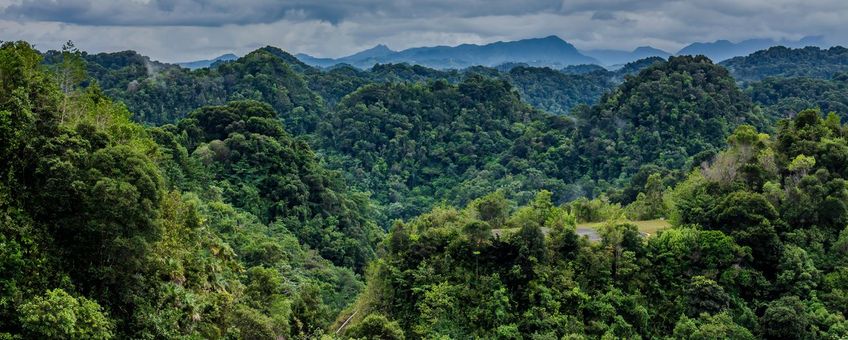
Droughts have had limited effect on tropical tree growth, but will it stay that way?
Wageningen Environmental Research, Wageningen University & ResearchThe researchers used the largest collection of tropical tree-ring data to date: more than 20,000 tree-ring series from nearly 500 locations in 36 countries. They calculated that, on average across the tropics, trees grew 2.5 percent less during drought years compared to years with normal or above-average precipitation. This growth dip largely disappeared in the year following the drought. However, the researchers warn that drought effects are much stronger locally. They will aggravate as climate change progresses and have likely caused elevated tree mortality.
Tree growth archive
Trees take up CO2, carbon dioxide, from the atmosphere through photosynthesis. A part of this CO2 is stored in tree trunks for many decades. This long-term carbon sequestration in tropical forests can help mitigate climate change. However, stem growth usually slows down during periods of drought, causing less CO2 to be sequestered in wood.
Lead author Professor Pieter Zuidema, Wageningen University & Research: “Until now, we didn’t know to what extent stem growth in tropical forests decreases during droughts. Tree rings are an excellent tool to quantify this, as they contain an archive of tree growth over the past century. With our new network of tree-ring records, we were able to calculate the effect of droughts on stem growth across the tropics for the first time.”

Resilience
The tree-ring data were collected at 483 locations spread across the tropics: from wet and warm Amazonian forests to dry forests in southern Africa and cooler Asian mountain forests. First, the researchers determined the driest years since 1930 for all locations. Them they calculated how much narrower the tree rings were during those years compared to normal years. They also measured the width of tree rings in the two years following a drought.
Zuidema: “We observed that – on average – stem growth of tropical trees decreased by 2.5 percent during the 10 percent driest years. If we only considered the 5 percent most extreme years, average stem growth decreased by 3.2 percent.” The researchers also found an nearly complete recovery in the year following the drought. They attribute this to sugar reserves in trees, which can be used to produce new leaves and wood.
Local impacts stronger
However, the effects of droughts differed significantly between research areas. Stem growth slowed down a lot more than the global average (by over 10 percent) at a quarter of the locations.
Zuidema: “This happened mainly in hot and dry regions, such as northeastern Brazil and southern Africa. The effects of drought can be more extreme there, because trees shed their leaves quickly and the soil retains less moisture. In wetter areas, such as Amazonian forests, the effects were weaker.”

Will the effects remain limited?
The researchers warn that stem growth resilience could weaken when droughts occur more frequently and become more intense under aggravating climate change. They already witnessed this at the research locations during the past decades. Zuidema: “Recent droughts have already caused stronger reductions in stem growth, compared to earlier droughts. It gets harder for trees to recover. We expect that ongoing climate change will only exacerbate this effect.” This could substantially lower the CO₂ sequestration rate in tropical forests.
Droughts may result in more tree mortality. “We have made an initial estimation by combining our data with those from long-term forest monitoring studies. We think that each dry year may cause 0.1 percent additional tree mortality, resulting in extra CO2 emissions from rotting dead wood. This 0.1 percent may seem insignificant, but summed across the world’s tropical areas, roughly as much CO2 could be released as Germany’s annual emissions. It will take decades before that amount will be taken up through tree growth again.”
Learning from the past
This study is the result of a recently formed tropical tree-ring network. Coauthor Dr Peter Groenendijk, from the University of Campinas, one of the network’s initiators: “Hundreds of tree-ring studies have been conducted on tropical trees over the past few decades. However, this is the first time those data have been compiled for large-scale analysis.” The network brings together data and expertise. Groenendijk: “We are trying to understand the past in order to predict the future."
More information
- Read the full publication 'Pantropical tree rings show small effects of drought on stem growth' in scientific journal Science.
Text: Pieter Zuidema, Wageningen University & Research
Images: Trey Perry, Flickr (lead photo: rainforest); Peter Groenendijk, University of Campinas, Brazil
